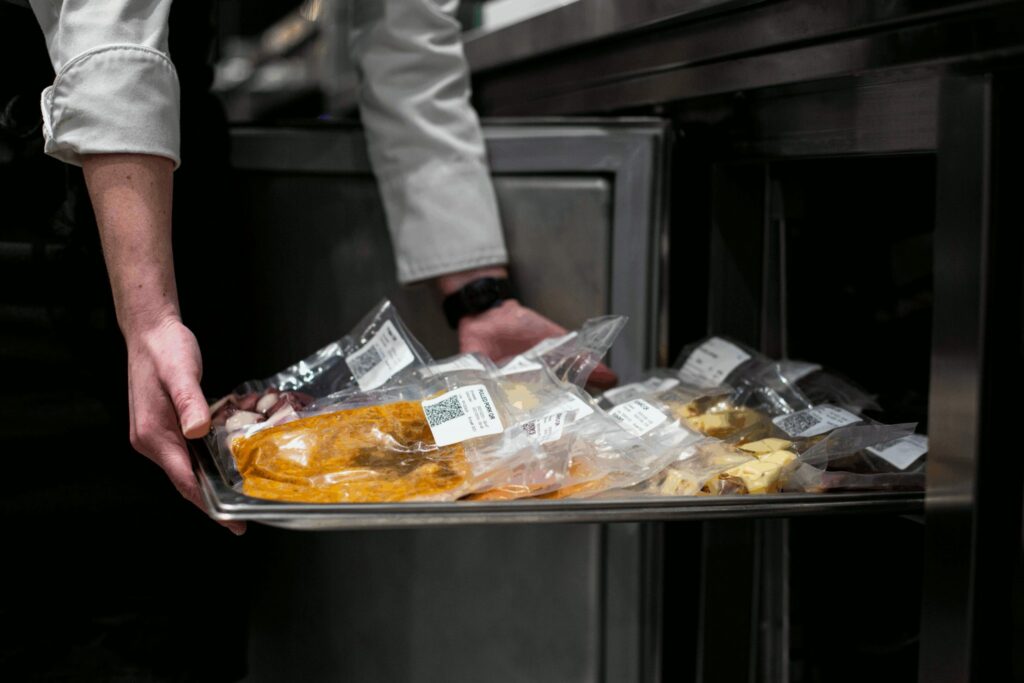What is food traceability?
European regulations define the term traceability as “the ability to find and trace through all production stages, processing and distribution food, feed, food-producing animal or substance intended to be incorporated into food or feed and likely to be incorporated into food or feed”.
What is the purpose of food traceability?
The purpose of product traceability is to be able to trace any food product or raw material within the supply chain and minimize health risks. This is achieved by identifying the batch number, allowing it to be discarded if it poses a safety risk for consumption.
In addition, since 2005, food traceability has been mandatory for companies in the food sector within the European Union.
What are the requirements for food traceability?
The European Union specifies the following 8 traceability requirements (in article 3 of the report published in 2011).
- An accurate description of the food.
- The volume or quantity of the food.
- The name and address of the food business operator from which the food has been dispatched.
- The name and address of the distributor if it is not the same as that of the food business operator since the food was dispatched.
- The name and address of the food business operator to which the food is dispatched.
- The name and address of the consignee (owner) if different from that of the food business operator to which the food is dispatched.
- A reference identifying the batch.
- Date of dispatch.
What types of traceability should we control?
There are 3 types of traceability that we must control:
Forward traceability
In this phase, all products ready to be shipped are controlled, as well as their recipients.
Process traceability
This traceability refers to the different processes or treatments that the food has undergone between arriving at the company and being shipped.


Backward traceability
This traceability refers to the producer, but in this case of raw materials.
Who is responsible for ensuring food traceability?
The actors involved in the supply chain
The actors involved along the supply chain are responsible for ensuring food safety.
The different states of the European Union
They must put in place different systems of official controls and carry out inspections to ensure food safety throughout the different stages of production, processing, and distribution.
In this area we find for example the HACCP control (Hazard Analysis and Critical Control Points). This is a tool for assessing hazards and establishing control systems that focuses on prevention rather than relying primarily on end-product testing.
The European Union
The European Union regulates quality and safety standards, as well as coordinating actions between the authorities of the Member States where appropriate. It can also impose limits on imports and exports.
It is also who approves the legislation on food traceability that Member States must comply with.
How to make a traceability plan in 5 steps?
Lets get into the 5 steps to establish a traceability plan:
Define product grouping criteria
When establishing a traceability plan, it is important to specify the criteria to be followed to group foods or products. Generally, they are grouped in batches, so that the different groupings of food are labeled with a batch number.
The size of the batch grouping varies according to the criteria previously established in the traceability plan. The more precise the grouping in terms of date, time and machinery used, the smaller the amount of product to be recalled if a health risk is identified.
Create a system of records and documentation
Once the criteria to be followed have been established, it is necessary to implement a system that allows all the data to be collected and recorded in an orderly and automatic manner. For this purpose, batches are usually labeled with barcodes or RFID technology.
The most used codes in the food industry are EAN 13 and EAN 128.
Use of the identification system
All agents in the chain must have an identification system in the three stages of traceability mentioned above, including the batch number on labels, delivery notes and invoices.
Incident control and management
The main objective of this traceability plan is to be able to identify and withdraw all those batches that pose a risk to consumer health; therefore, it must include an action protocol that allows to do it in the most agile, efficient, and safe way.
Test the traceability plan
Finally, the plan must be checked to ensure that it works. This should be done by external people or agents through a system of review and monitoring of all activities.
How to control food traceability with the JANBY Track?
The QR labels of our Janby system in addition to auto configure the cooking equipment for the correct cooking of the products have the following information:
- Batch identifier
- Unique bag identifier
- Organization identifier
- Discard date
- Packaging date
- Information about the manufacturing process
- Allergen information
- Information about recommended diets
All this information can be visible on the label or by scanning the QR code we could make visible all the relevant information for the different sanitary audits.








